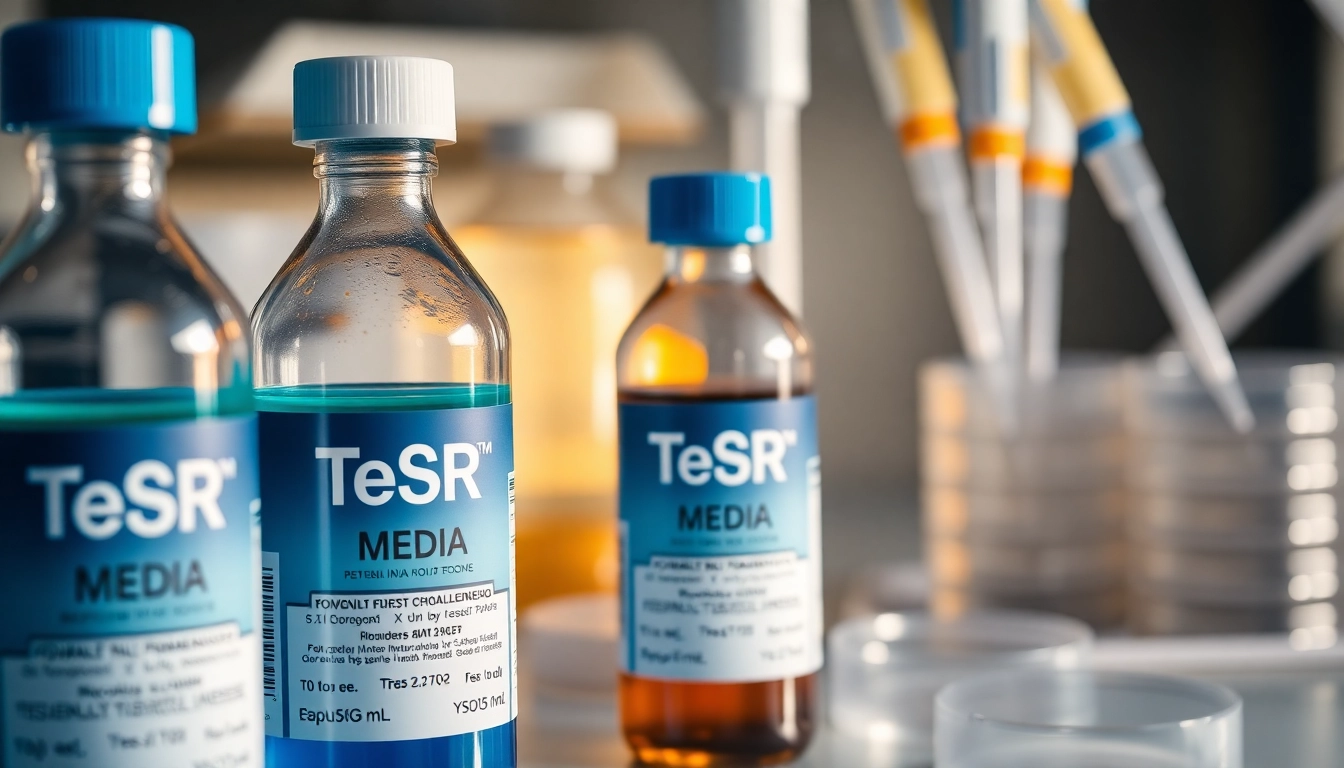Understanding TeSR™ Feeder-Free Pluripotent Stem Cell Culture Media
The field of stem cell research has advanced significantly over recent years, with a notable focus on the necessity of effective and reliable culture media for maintaining and differentiating pluripotent stem cells (PSCs). Among these, all check technologies have garnered attention for their innovative approaches to feeder-free culture methodologies. This article aims to shed light on TeSR™ media products — a family of solutions designed to optimize the culture, reprogramming, and differentiation of human embryonic stem (ES) and induced pluripotent stem (iPS) cells.
What is TeSR™ Media?
TeSR™ media encompasses a series of feeder-free culture media specifically formulated to enhance the growth and maintenance of human pluripotent stem cells. Developed from the pioneering work of Dr. James Thomson and his colleagues, these formulations provide a xeno-free environment that is crucial in minimizing variability and improving the consistency of research outcomes. TeSR™ media not only facilitates the maintenance of PSCs but also supports their reprogramming and differentiation into various cell types.
Key Features of TeSR™ Products
TeSR™ products are characterized by several unique features that distinguish them from traditional culture media:
- Defined Formulations: Each product is based on published formulations to ensure reproducibility and consistency in stem cell research.
- Xeno-Free Options: Many variants, such as TeSR™-2 and TeSR™-AOF, guarantee the absence of animal-derived components, enhancing safety during stem cell applications.
- Batch-to-Batch Consistency: The production process of TeSR™ media prioritizes rigorous quality control, ensuring consistent results across experiments.
- Variety of Applications: These media are tailored for multiple stages of stem cell research, including maintenance, differentiation, and cryopreservation.
Comparing TeSR™ with Traditional Culture Media
Traditional stem cell culture media often rely on feeder layers, such as mouse embryonic fibroblasts (MEFs), which introduce variability and define the need for constant monitoring and maintenance to prevent contamination. Conversely, TeSR™ media provide a feeder-free alternative, allowing for more straightforward and controlled experimental conditions.
Benefits of Feeder-Free Culture
Enhanced Cell Quality and Consistency
Feeder-free culture systems implemented through TeSR™ media result in improved cell quality in terms of morphology, proliferation rates, and pluripotency markers. The absence of feeder layers reduces the risk of cross-contamination and simplifies the handling of PSCs, thereby enhancing overall experimental reliability.
Applications in iPSC Research
The flexibility of TeSR™ media allows researchers to efficiently generate iPSCs from various cell types, including fibroblasts and hematopoietic progenitor cells. The ability to reprogram cells effectively paves the way for personalized medicine and regenerative therapies.
Case Studies of Successful Implementations
Various studies have demonstrated the effectiveness of TeSR™ media. For instance, a study by Wu et al. utilized TeSR™-E6™ and showcased the successful differentiation of human iPSCs into hematopoietic cells, highlighting the media’s utility in advanced regenerative medicine.
Choosing the Right TeSR™ Product for Your Research
Overview of Available TeSR™ Media
The TeSR™ family includes several specialized media, each designed to meet specific needs:
- mTeSR™ Plus: An enhanced version of mTeSR™1 that offers improved buffering capacity to reduce medium acidification.
- TeSR™-AOF: An animal origin-free formulation aimed at specific applications requiring high safety margins.
- TeSR™-E8™: A low-protein, simple maintenance medium for hPSCs, focusing on essential media components.
- ReproTeSR™: Designed specifically for reprogramming somatic cells to pluripotent stem cells.
Factors to Consider When Selecting a Media
When choosing the right TeSR™ media for your research, consider the following:
- Cell Type: Different cell types may respond better to specific formulations; understanding your starting material is key.
- Downstream Applications: Consider whether you will require differentiation into specific cell types after maintenance—some media are tailored for such transitions.
- Regulatory Requirements: Ensure the chosen media comply with relevant regulatory standards, particularly if transitioning to clinical applications.
Interactive Product Finder Guide
STEMCELL Technologies offers an interactive product finder, enabling researchers to identify the optimal TeSR™ culture media based on their specific needs. This resource is invaluable for both new and experienced scientists navigating the complexities of stem cell culture.
Expert Insights on Using TeSR™ Media Effectively
Interviews with Leading Researchers
Extracts from interviews with renowned scientists enhance understanding of the practical application of TeSR™ media. For instance, Dr. Joseph C. Wu highlights the significance of TeSR™-E7™ for differentiating iPSCs into hematopoietic cells, emphasizing the medium’s reliability for research in blood disorders.
Best Practices in Stem Cell Maintenance
Effective stem cell maintenance using TeSR™ media involves adhering to several best practices, such as:
- Regular monitoring of cell morphology and growth rates.
- Utilizing established protocols for media changes to maintain optimal growth conditions.
- Maintaining stringent sterile techniques to prevent contamination and support cell viability.
Common Challenges and Solutions
Researchers may face challenges such as cell differentiation inefficiencies or inconsistent growth. Addressing these issues often involves re-evaluating media compositions, fine-tuning environmental conditions, and consulting available scientific literature for adjusted protocols that have proven successful in similar studies.
Quality Control and Regulatory Compliance
Understanding cGMP Standards
Current Good Manufacturing Practice (cGMP) standards are critical for ensuring the safety and efficacy of stem cell culture media. TeSR™ media are manufactured under stringent cGMP guidelines, guaranteeing that researchers have access to high-quality products suitable for both research and clinical applications.
Impact of Quality on Research Outcomes
The quality of the culture media directly influences research outcomes. High-quality media improves reproducibility, thereby building confidence in the results obtained. Moreover, mediated quality correlates with successful differentiation and maintenance, impacting downstream applications significantly.
Resources for Ensuring Compliance
STEMCELL Technologies provides extensive resources and documentation on cGMP compliance, assisting researchers in understanding how to maintain regulatory standards throughout their research processes.
